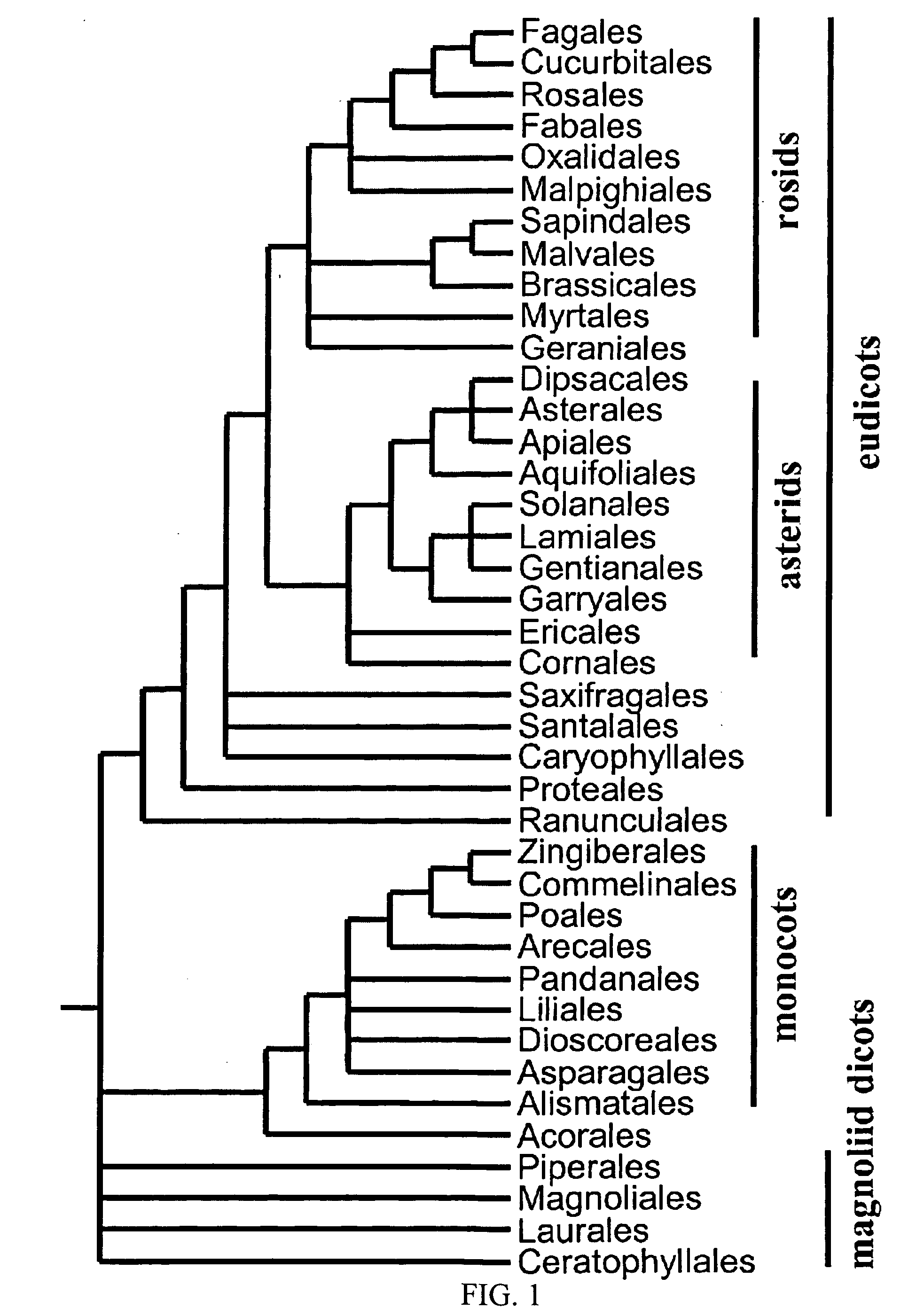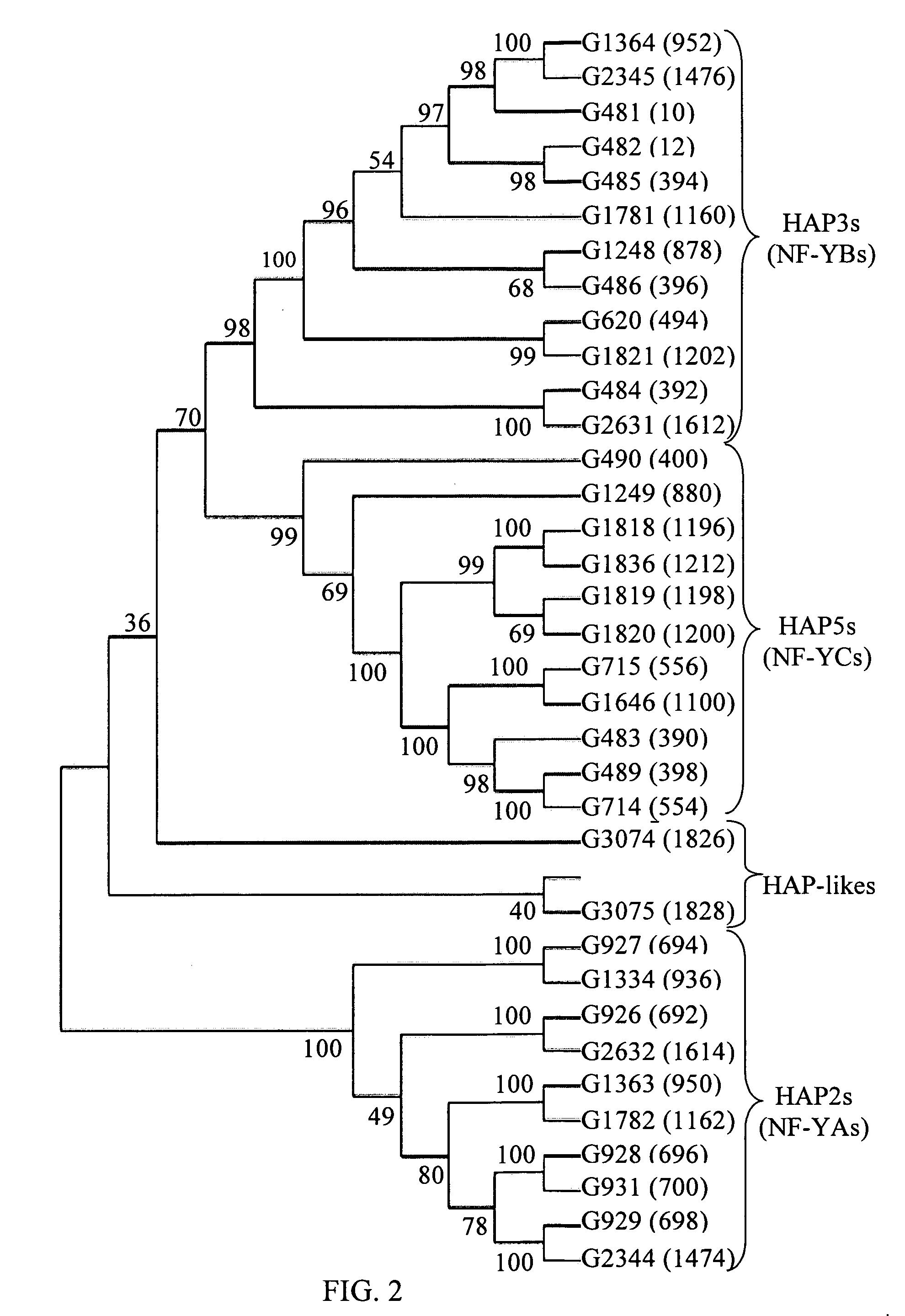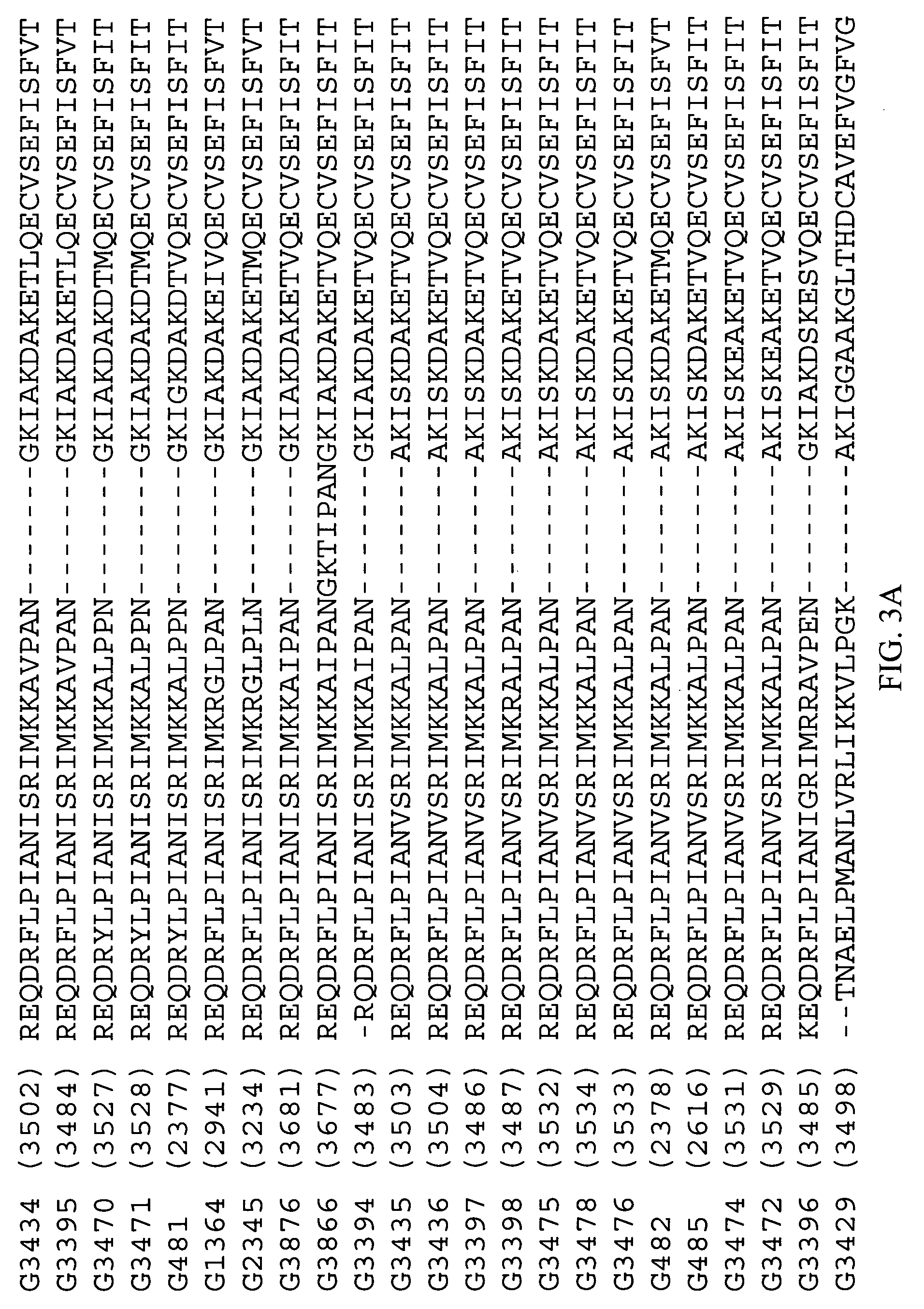Biotic and abiotic stress tolerance in plants
a technology of abiotic stress tolerance and plants, applied in the field of biotic and abiotic stress tolerance in plants, can solve the problems of high cost of plant fertilization, and high cost of plant fertilization, and achieve the effects of greater resistance to erysiphe, greater resistance to sclerotinia, and greater resistance to botrytis
- Summary
- Abstract
- Description
- Claims
- Application Information
AI Technical Summary
Benefits of technology
Problems solved by technology
Method used
Image
Examples
example 1
Project Types
[0247]A variety of constructs were used to modulate the activity of lead transcription factors, and to test the activity of orthologs and paralogs in transgenic plant material. This platform provided the material for all subsequent analysis.
[0248]Transgenic lines from each particular transformation “project” were examined for morphological and physiological phenotypes. An individual project was defined as the analysis of lines for a particular construct or knockout (for example this might be 35S lines for a lead gene, 35S lines for a paralog or ortholog, lines for an RNAi construct, lines for a GAL4 fusion construct, lines in which expression is driven from a particular tissue specific promoter, etc.) In the current lead advancement program, four main areas of analysis were pursued, spanning a variety of different project types (e.g., promoter-gene combinations).
(1) Overexpression / Tissue-Specific / Conditional Expression
[0249]The promoters used in our experiments were sel...
example ii
Promoter Analysis
[0268]A major component of the program was to determine the effects of ectopic expression of transcription factors in a variety of different tissue types, and in response to the onset of stress conditions. Primarily this was achieved by using a panel of different promoters via a two-component system.
[0269]Component 1: promoter driver lines (Promoter::LexA / GAL4). In each case, the first component (Promoter::LexA / GAL4) comprised a LexA DNA binding domain fused to a GAL4 activation domain, cloned behind the desired promoter. These constructs were contained within vector backbone pMEN48 (Example III) which also carried a kanamycin resistance marker, along with an opLexA::GFP reporter. The GFP was EGFP, an variant available from Clontech (Mountain View, Calif.) with enhanced signal. EGFP is soluble in the cytoplasm. Transgenic “driver lines” were first obtained containing the Promoter::LexA / GAL4 component. For each promoter driver, a line was selected which showed reprod...
example iii
Vector and Cloning Information
Vector and Cloning Information: Expression Vectors.
[0274]A list of nucleic acid constructs (PIDs) included in this application, indicating the promoter fragment that was used to drive the transgene, along with the cloning vector backbone, is provided in the Sequence listing as SEQ ID NOs 3792-5086 and 5102-5106.
[0275]Target sequences were selected to be 100 bp long or longer. For constructs designed against a clade rather than a single gene, the target sequences had at least 85% identity to all clade members. Where it is not possible to identify a single 100 bp sequence with 85% identity to all clade members, hybrid fragments composed of two shorter sequences were used.
[0276]Cloning Methods.
[0277]Arabidopsis transcription factor clones were created in one of three ways: isolation from a library, amplification from cDNA, or amplification from genomic DNA. The ends of the Arabidopsis transcription factor coding sequences were generally confirmed by RACE P...
PUM
| Property | Measurement | Unit |
|---|---|---|
| Temperature | aaaaa | aaaaa |
| Temperature | aaaaa | aaaaa |
| Fraction | aaaaa | aaaaa |
Abstract
Description
Claims
Application Information
 Login to View More
Login to View More - R&D
- Intellectual Property
- Life Sciences
- Materials
- Tech Scout
- Unparalleled Data Quality
- Higher Quality Content
- 60% Fewer Hallucinations
Browse by: Latest US Patents, China's latest patents, Technical Efficacy Thesaurus, Application Domain, Technology Topic, Popular Technical Reports.
© 2025 PatSnap. All rights reserved.Legal|Privacy policy|Modern Slavery Act Transparency Statement|Sitemap|About US| Contact US: help@patsnap.com



